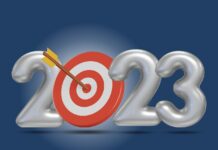During this series, we have spent much time exploring the self. Now, we want to look at how to match your personal brand to your professional image. First, we must remember that while image and brand are often connected, they are distinct. Your brand is your strengths, skills and those values and passions we have previously explored. Image, on the other hand, is the visual representation or packaging that you use to communicate your brand.
As the adage goes, image is everything. In this case, however, we are not only talking about the photograph on your LinkedIn page but what you are communicating about yourself.
Consistency
Let us first look at consistency. Think about Apple as a brand. They are a manufacturer of premium tech products. Arguably, their products are overpriced when compared to competitors. Varying features aside, the iPhone is no better than a flagship smartphone from another company. The iMac range is considerably more expensive than even a mid-range laptop from competitors with similar specifications. This is true across the entire Apple product lineup.
However, people still buy Apple products. Queues form outside shops for the latest iPhones. Why is this? It is because Apple has cultivated a consistent, premium image. Additionally, Apple has mastered incremental upgrades over overhauls. People will pay the price because they believe they are getting that extra level of quality and service. Consumers love consistency, in both quality and design. When Microsoft introduced Windows 8, an objectively better operating system than any predecessor, they received a huge backlash due to overwhelming user interface changes.
Consumers are not the only ones who value consistency; future employers will too. Consistency is the first thing you should strive for when building your professional image. Your managers and your clients will value someone they feel they can trust to bring the same effort and commitment to every project. Learning time management strategies can be very helpful here. Similarly, setting aside specific periods of the day to check and respond to emails or return phone calls helps to start building a solid, consistent foundation.
What is Your USP?
Another thing that both potential employers and consumers look for is uniqueness. Everybody wants to feel that he or she has something that few others possess. Think back to Apple; for all the units they shift, comparatively few people own an iPhone compared to an Android phone. Even fewer own an iMac compared to a Windows-based system. Why did Paul Pogba, Cristiano Ronaldo or Neymar command such huge transfer fees? These people have skills that few others do, and with that comes an enormous amount of merchandising potential.
What unique abilities do you offer that can become a marketable draw? What thing do you believe is something that you can do better than almost anybody else? We are not looking at arrogant delusion but self-awareness of what makes you unique. Are you an excellent reader of people, or blessed with quick reactions to rapidly changing circumstances? Whatever your critical ability is, you should find a way to make it part of your image.
Be Creative
Creativity can help sell your uniqueness. In today’s social media connected world, standing out from the crowd is critical to being noticed. Fortunately, there are many ways to do this. Putting some effort into your social media profiles can reap significant rewards, especially when you remember our previous posts on aiming for the jobs you want. Do not just upload a photo of you in a suit and reel off a few bits of your previous jobs; present yourself in a way that your competitors are not. You might want to refer to our post on Generating Leads on LinkedIn for some ideas.
Do not be afraid to address the difficulties you have had. Any leader worthy of the title knows that virtually all of us have suffered setbacks. However, setbacks do not define the person. How we respond does. You might want to consider turning some of these difficulties into case studies for a portfolio of your work, detailing the brief, the obstacles and how you confronted them. This comes back to consistency – quitters are not consistent.
Are You Memorable?
Finally, for today, consider how you can make yourself memorable. Anthropologist Robin Dunbar suggested there is a cognitive limit to the number of stable social relationships that we can maintain. Dunbar’s Number is often referred to as ‘the monkeysphere’. Once we reach the upper limit of approximately 150 people, it is theorised that we are unable to maintain further connections. Worse still, we are no longer able to conceptualise those people as people.
People remain in our monkeysphere depending on the importance that we place on them and how memorable they are to us. What this means for our professional image is that we must always strive to make ourselves memorable; to remain as one of the ‘people’ in our client’s minds. As I have often said, people buy from people. Making yourself memorable is one way of ensuring that they will buy from you.
You might want to read our brief guide to networking. Another way to become memorable is to aim to connect with people on more meaningful levels. Do not be afraid to discuss hobbies with people, or to talk about your family on your LinkedIn page. Even the smallest thing could help you be seen as an actual person and that is a big step to getting the future gigs you are after.














